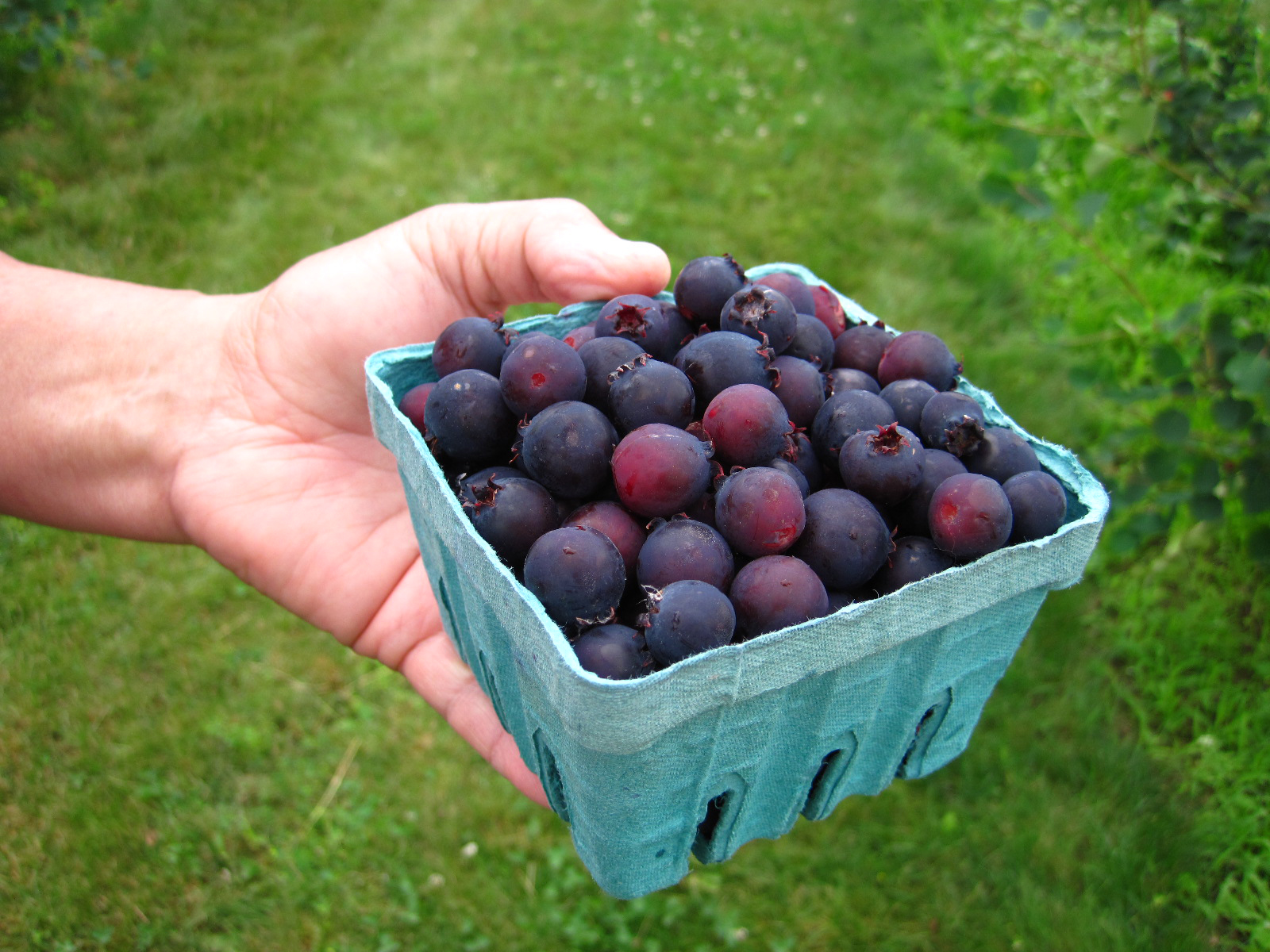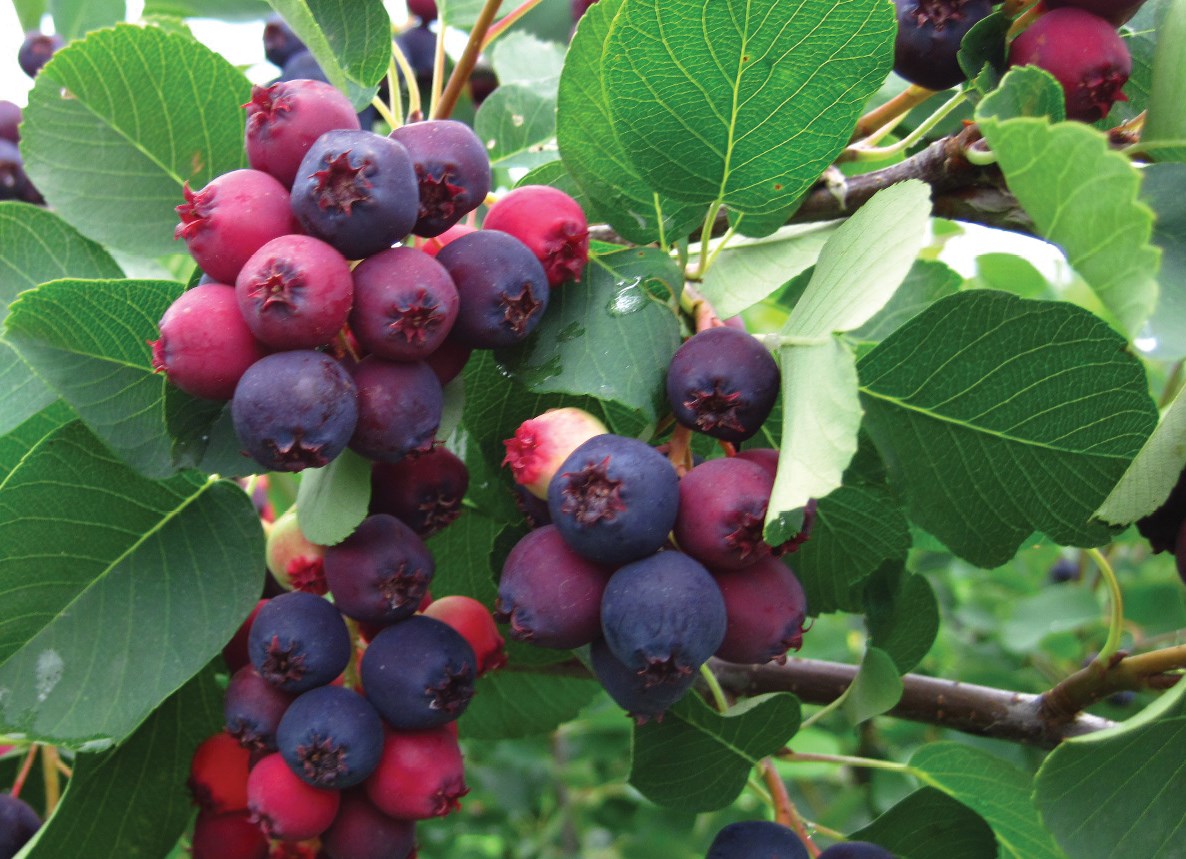16. Juneberry:

These red berries turn blue-black on ripening. They are similar to the size of blueberries. They are easily distinguished by the crown on the end, away from the stock.
They are great to make jams, muffins, cobblers,etc. June berries, commonly known as Saskatoons, are purplish-blue berries, similar to blueberries. These tasty pleasures have been a staple of Western Canada for hundreds of years, and are now available for enjoyment worldwide.
Very similar to blueberries in almost all characteristics that are important to the consumer, including fruit colour, shape, size, nutrition, texture, and uses. In addition, both fruits are native to North America, and they have practically identical historical uses and known health benefits. The quality of the fruit varies from one species to the next, but all are edible and most are very good. This is the most common type of edible berry in most of the continent. Saskatoon berries belong to the Rosaceae family, and the Amelanchier genus. Other fruits belonging to Rosaceae family include apples, pears, prunes, plums, cherries, apricots, strawberries, raspberries, and blackberries. Saskatoon fruit has been grown on the Canadian prairies commercially, since the mid 1960’s. The current annual production is about 5-6 million kilograms. The cultivars of saskatoon berries grown in orchards commercially were selected from wild plants for their resistance to diseases, high yields and fruit quality, especially flavour, colour and texture of the berries. The mature fruit is a purple berry-like pome, 1-1.5 cm in diameter, practically identical to a blueberry.
Very rich source of flavonoids and one of the highest recorded antioxidant capacities of many fruits and vegetables. Greater than blueberries in many vitamins and minerals including calcium, potassium, iron, magnesium, and vitamin E. Nearly twice as much fiber and protein.

Uses:
Amelanchier spp. can be eaten fresh, preserved/canned, dried, made in to cider, wine, beer, or tea. Currently, most are consumed fresh, baked into pies, or processed into jams and spreads. Today, new and innovative methods of processing, freezing and packaging have greatly increased berry uses. Improved harvesting and climate controlled environments have enabled distributors to significantly extend the shelf life of fresh berries.
Recent research indicates that June berries have higher level of antioxidants compared to other more common berries such as wild blueberries, strawberries or raspberries. In addition June berries are significantly higher in protein, calcium and fiber than blueberries while also being a great source of Vitamins A &C.
A great source of fiber! A ¾ cup (100gram) serving of June berries contains 6 grams of fiber or 24% of the daily requirement.
June berries just don’t quit when it comes to health and nutrition. June berries are a source of 5 essential vitamins and minerals. Exploring the health benefits of June berries today, is one step forward in reaching a healthy lifestyle. Serviceberries: This berry-like pome is red to purple in color. It is a sweet berry that is used to make pies and jams.
Disclaimer
The Content is not intended to be a substitute for professional medical advice, diagnosis, or treatment. Always seek the advice of your physician or other qualified health provider with any questions you may have regarding a medical condition.